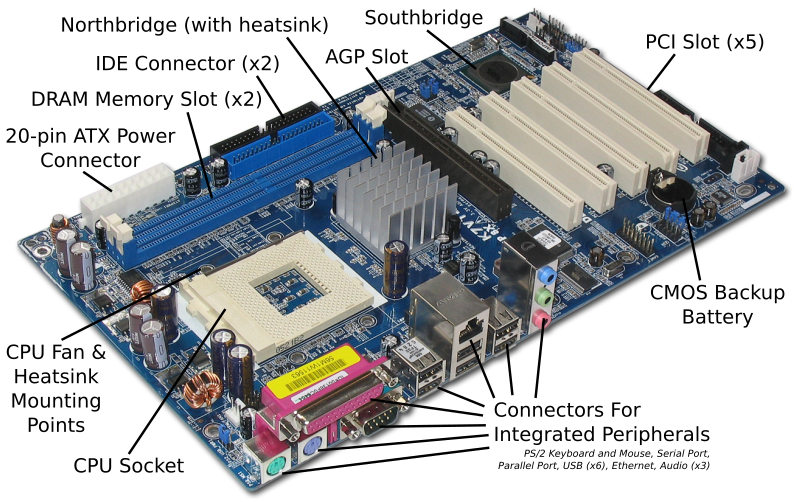Learning Resources
Basic Components Identification
Modern motherboards include, at a minimum:
- sockets (or slots) in which one or more microprocessors may be installed. In the case of CPUs in BGA packages, such as the VIA C3, the CPU is directly soldered to the motherboard.
- Slots into which the system's main memory is to be installed (typically in the form of DIMM modules containing DRAM chips)
- A chipset which forms an interface between the CPU's front-side bus, main memory, and peripheral buses
- Non-volatile memory chips (usually Flash ROM in modern motherboards) containing the system's firmware or BIOS
- A clock generator which produces the system clock signal to synchronize the various components
- Slots for expansion cards (these interface to the system via the buses supported by the chipset)
- Power connectors, which receive electrical power from the computer power supply and distribute it to the CPU, chipset, main memory, and expansion cards. As of 2007, some graphics cards (e.g. GeForce 8 and Radeon R600) require more power than the motherboard can provide, and thus dedicated connectors have been introduced to attach them directly to the power supply. Most disk drives also connect to the power supply via dedicated connectors.
An image showing the various parts -


